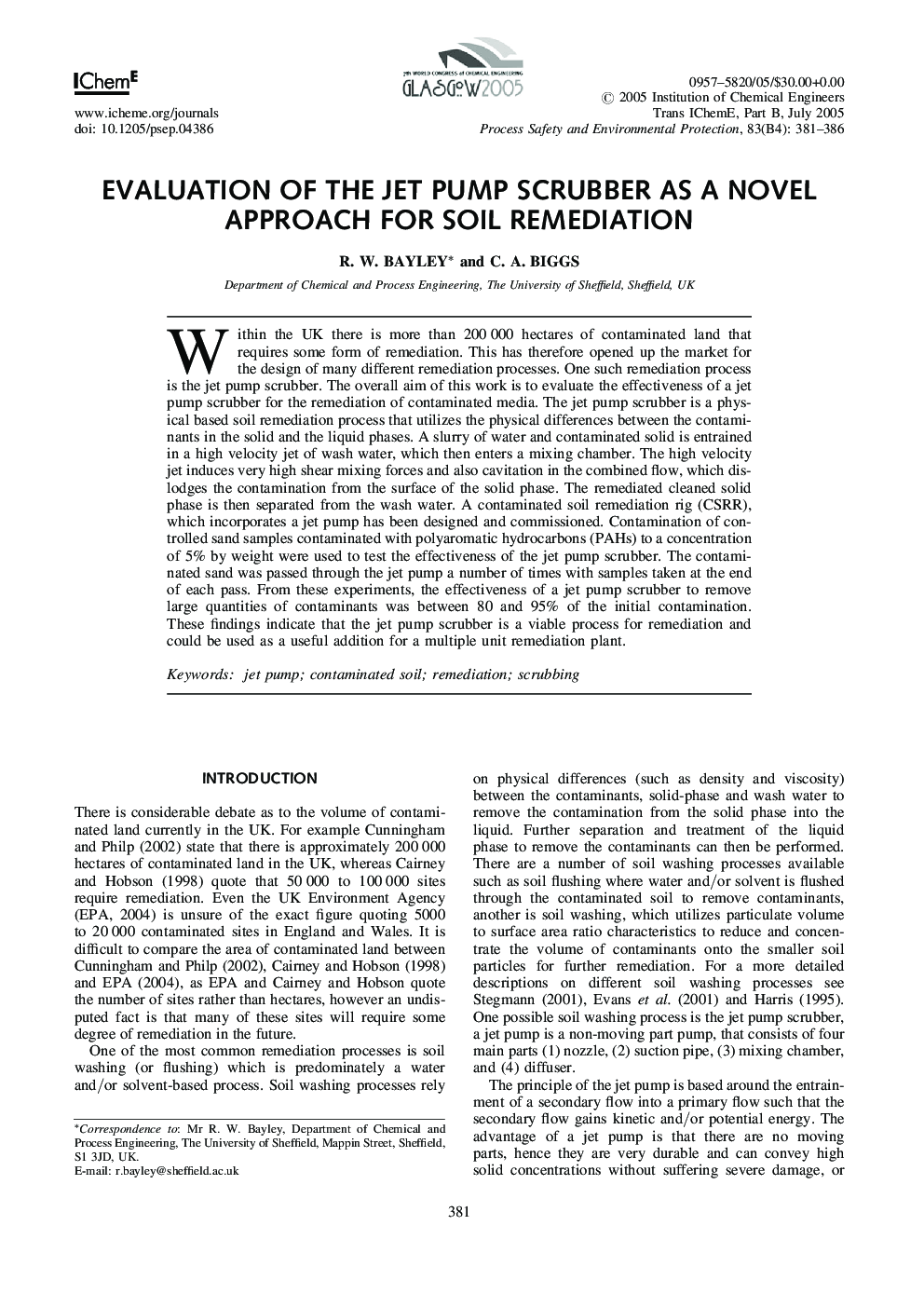| Article ID | Journal | Published Year | Pages | File Type |
|---|---|---|---|---|
| 10374138 | Process Safety and Environmental Protection | 2005 | 6 Pages |
Abstract
Within the UK there is more than 200 000 hectares of contaminated land that requires some form of remediation. This has therefore opened up the market for the design of many different remediation processes. One such remediation process is the jet pump scrubber. The overall aim of this work is to evaluate the effectiveness of a jet pump scrubber for the remediation of contaminated media. The jet pump scrubber is a physical based soil remediation process that utilizes the physical differences between the contaminants in the solid and the liquid phases. A slurry of water and contaminated solid is entrained in a high velocity jet of wash water, which then enters a mixing chamber. The high velocity jet induces very high shear mixing forces and also cavitation in the combined flow, which dislodges the contamination from the surface of the solid phase. The remediated cleaned solid phase is then separated from the wash water. A contaminated soil remediation rig (CSRR), which incorporates a jet pump has been designed and commissioned. Contamination of controlled sand samples contaminated with polyaromatic hydrocarbons (PAHs) to a concentration of 5% by weight were used to test the effectiveness of the jet pump scrubber. The contaminated sand was passed through the jet pump a number of times with samples taken at the end of each pass. From these experiments, the effectiveness of a jet pump scrubber to remove large quantities of contaminants was between 80 and 95% of the initial contamination. These findings indicate that the jet pump scrubber is a viable process for remediation and could be used as a useful addition for a multiple unit remediation plant.
Related Topics
Physical Sciences and Engineering
Chemical Engineering
Chemical Health and Safety
Authors
R.W. Bayley, C.A. Biggs,
